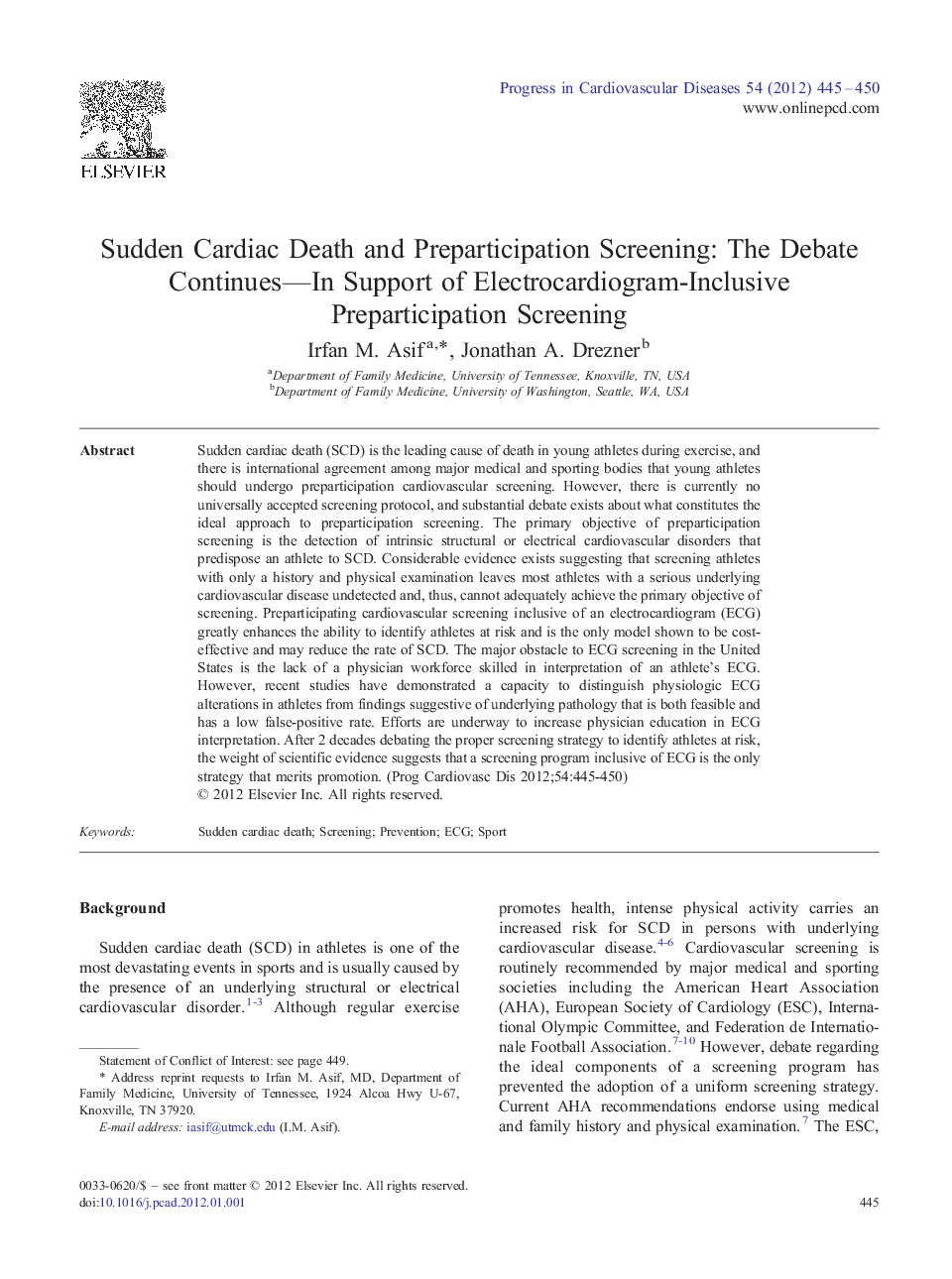| Article ID | Journal | Published Year | Pages | File Type |
|---|---|---|---|---|
| 3006920 | Progress in Cardiovascular Diseases | 2012 | 6 Pages |
Sudden cardiac death (SCD) is the leading cause of death in young athletes during exercise, and there is international agreement among major medical and sporting bodies that young athletes should undergo preparticipation cardiovascular screening. However, there is currently no universally accepted screening protocol, and substantial debate exists about what constitutes the ideal approach to preparticipation screening. The primary objective of preparticipation screening is the detection of intrinsic structural or electrical cardiovascular disorders that predispose an athlete to SCD. Considerable evidence exists suggesting that screening athletes with only a history and physical examination leaves most athletes with a serious underlying cardiovascular disease undetected and, thus, cannot adequately achieve the primary objective of screening. Preparticipating cardiovascular screening inclusive of an electrocardiogram (ECG) greatly enhances the ability to identify athletes at risk and is the only model shown to be cost-effective and may reduce the rate of SCD. The major obstacle to ECG screening in the United States is the lack of a physician workforce skilled in interpretation of an athlete's ECG. However, recent studies have demonstrated a capacity to distinguish physiologic ECG alterations in athletes from findings suggestive of underlying pathology that is both feasible and has a low false-positive rate. Efforts are underway to increase physician education in ECG interpretation. After 2 decades debating the proper screening strategy to identify athletes at risk, the weight of scientific evidence suggests that a screening program inclusive of ECG is the only strategy that merits promotion.
